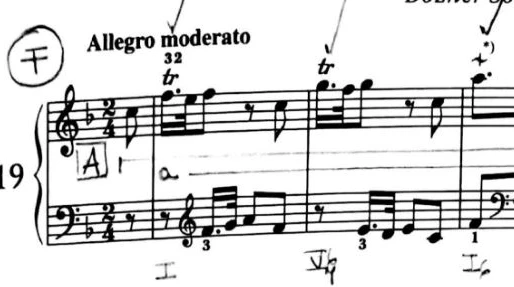Haydn Sonatas, Uncategorized
Haydn Sonata in F Hob. XVIF3 Bozner
I – Allegro Moderato
This is a rather unussual example for an early Haydn Sonata.
The way it is written proposes a big challenge to the pianist. This challenge is not a technical one though; it is mainly interpretative…
NOTE: For the sake of this analysis, we will only consider themes, those musical compounds which are more than 8 bars long.
EXPOSITION
Theme A
The correlation between short and long notes and the way in which Haydn establishes a melodic vertical line moving upwards starting on F and ascending through the following three focal points up until A, helps the consolidation of a beautiful and firm opening gesture for this elegant sonata.
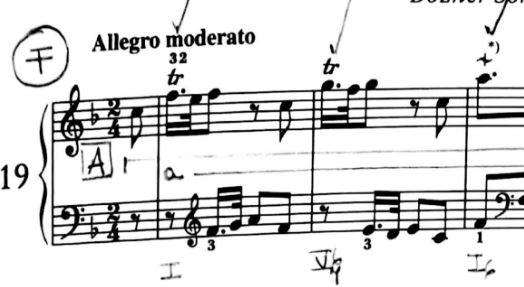
The first theme is mainly structured in two segments one 6 and the other one 4 bars long. Irregular from its very beginnings, this work proposes two possible analysis. One, in which we consider this two segments: antecedent and consequent, and therefore we label A as a period. Or two, in which we consider the first 6 bars a phrase on itself while the following bars represent a repetition bridging towards the episode. In the latter case, we should consider each segment a sentence. In this analysis, My choice is to go for the first scenario. We need to keep in mind that in any case, A is built up of two modules.
In terms of the motive itself, I’m tempted to say that the way it is written proposes a big challenge to the performer. This challenge is obviously not technical but interpretative. The profusion of focal points and the way in which they are presented, tend to bring the tempo “backwards”. It is fundamental to keep the pulse steady while lively -not stiff but consistent-, otherwise the piece can sounding rather “heavy”.
Episode
Following A, we encounter a modulating Episode -10 bars long-. It means to destabilise the harmonic centre towards the dominant. This motive is split in two halves. The first one works as a series of 4 micro periods, in which the last two are worked out as diminutions of the first two. The second half of the modulating episode is a sequence which prepares the grounds for B to be presented in its dominant form.
Theme B
Harmonically speaking, B is very simple. 8 bars long and sentencial in its constituency, its harmony is worked out in the same way Haydn worked out the rhythm in the first half of the episode. Basically, he insists on a simple cadence -first half- followed by an authentic one by the end of the phrase.
In other words, we could see this as an augmentation of the harmonic rhythm.
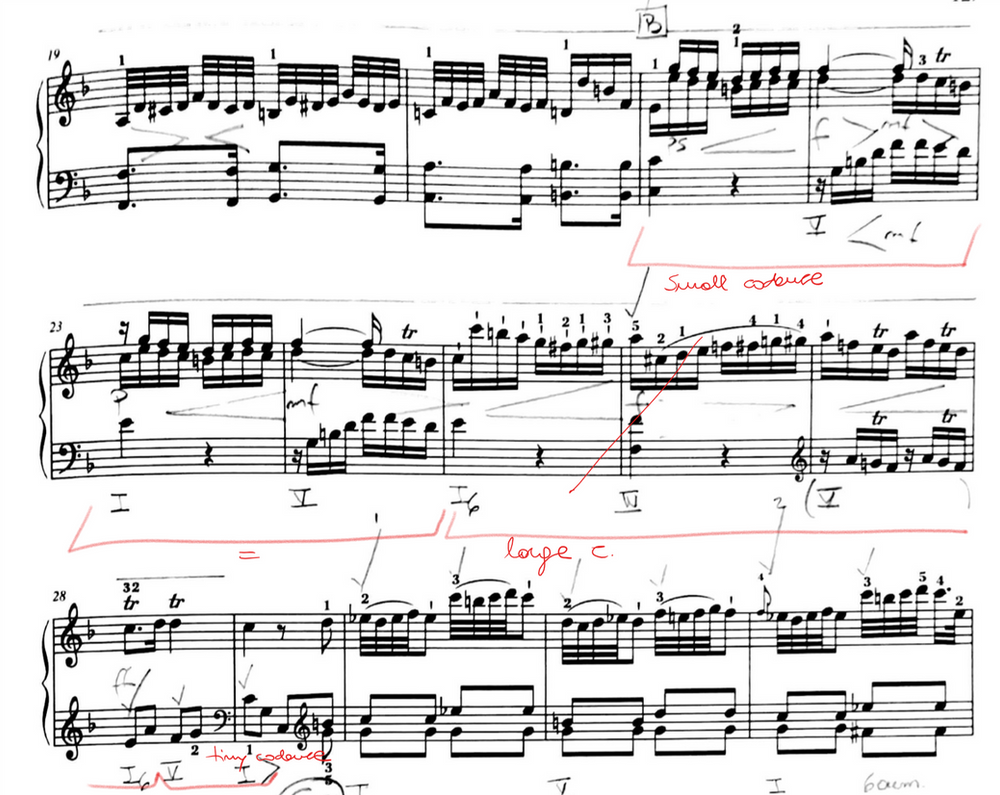
Episode and CODA
Following B, we find a short “minore” episode in the tonic minor. It is tempting to consider this section as a theme on itself. It has its own motivic personality and it is harmonically stable. Nevertheless, there is not enough musical framing neither its length is appropriate for us to consider it a theme.
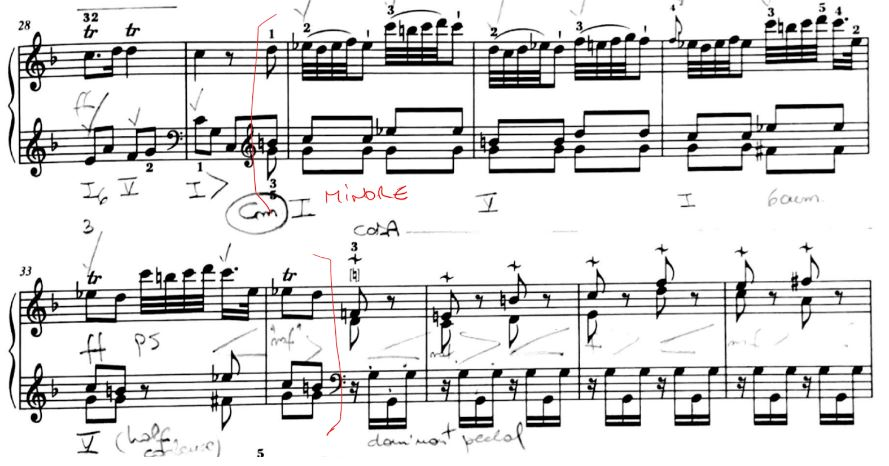
The CODA to the exposition portrays a “pedal” on the dominant which then leads to 5 last bars of authentic cadence. It is important to remark the harmonic progression states for a bar on the tonic while it accelerates on the IV and V. This tendency, which is repeated three times through these bars, strengthens the “tonic” (dominant of the piece) and contributes to stop the harmonic flow towards the final cadence.
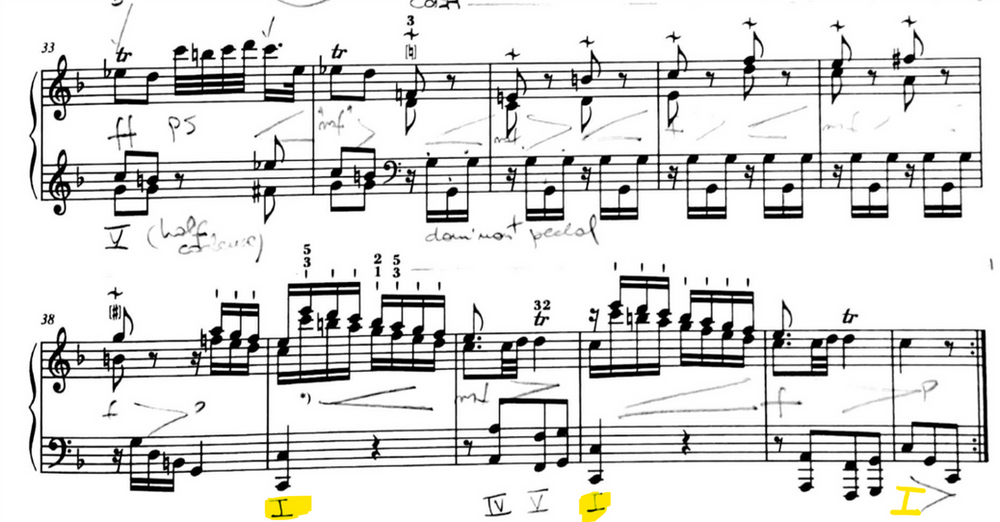
#Haydnproject #HaydnProject #pianolessonsforadults #adultpianolessons #pianomusic

